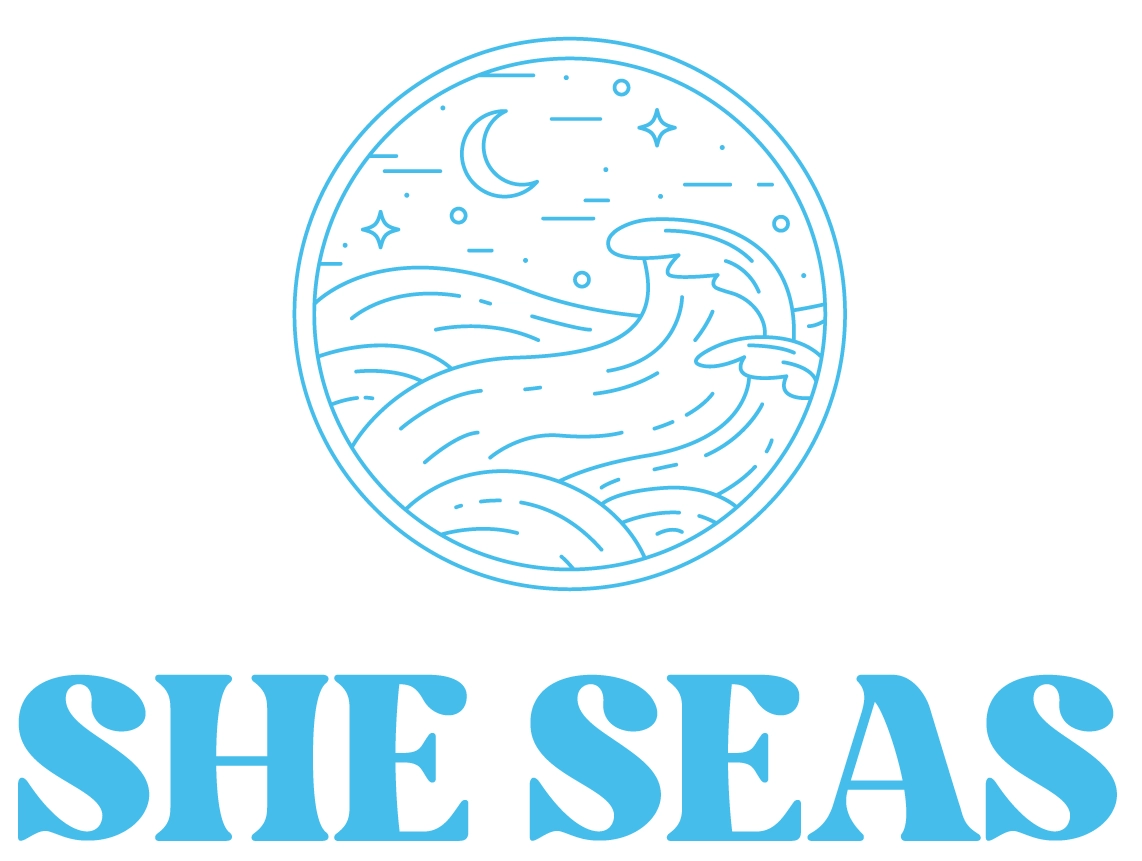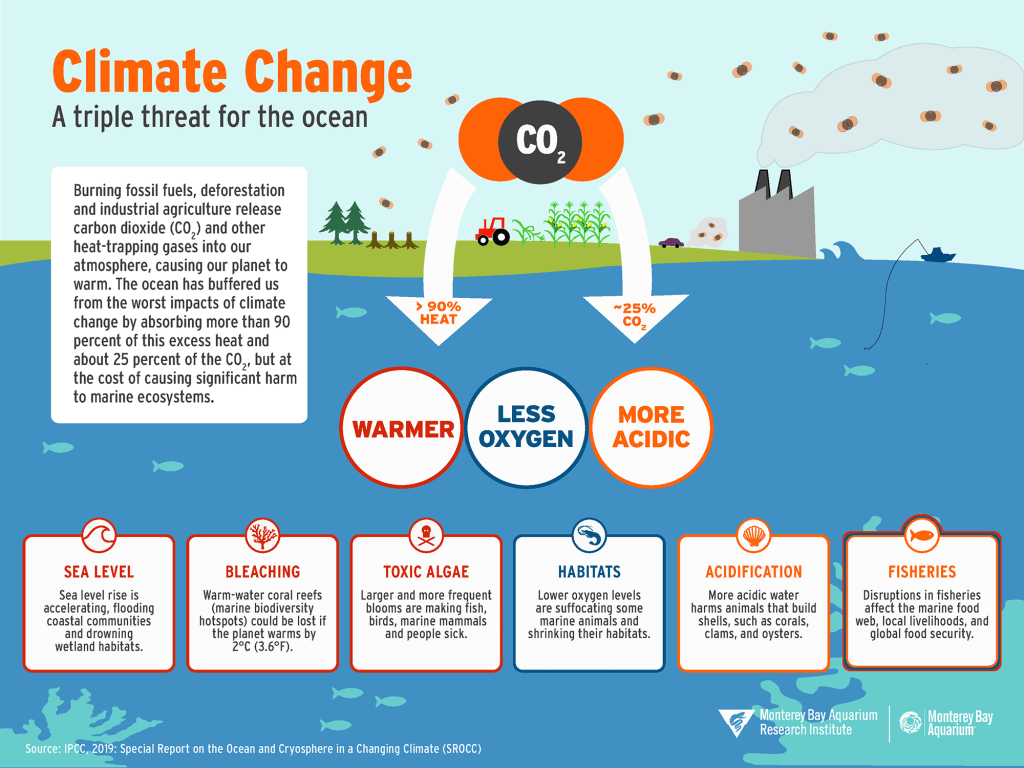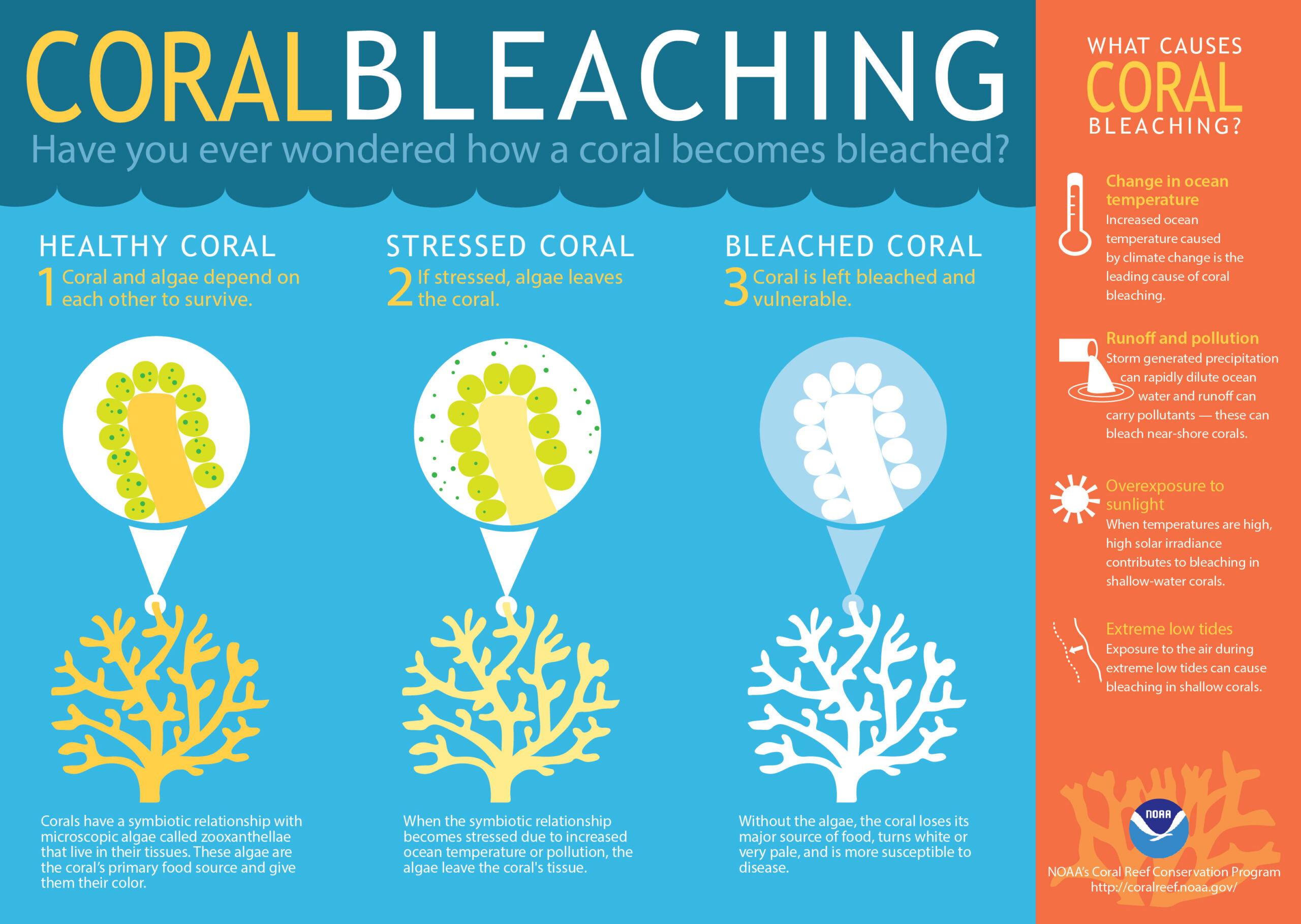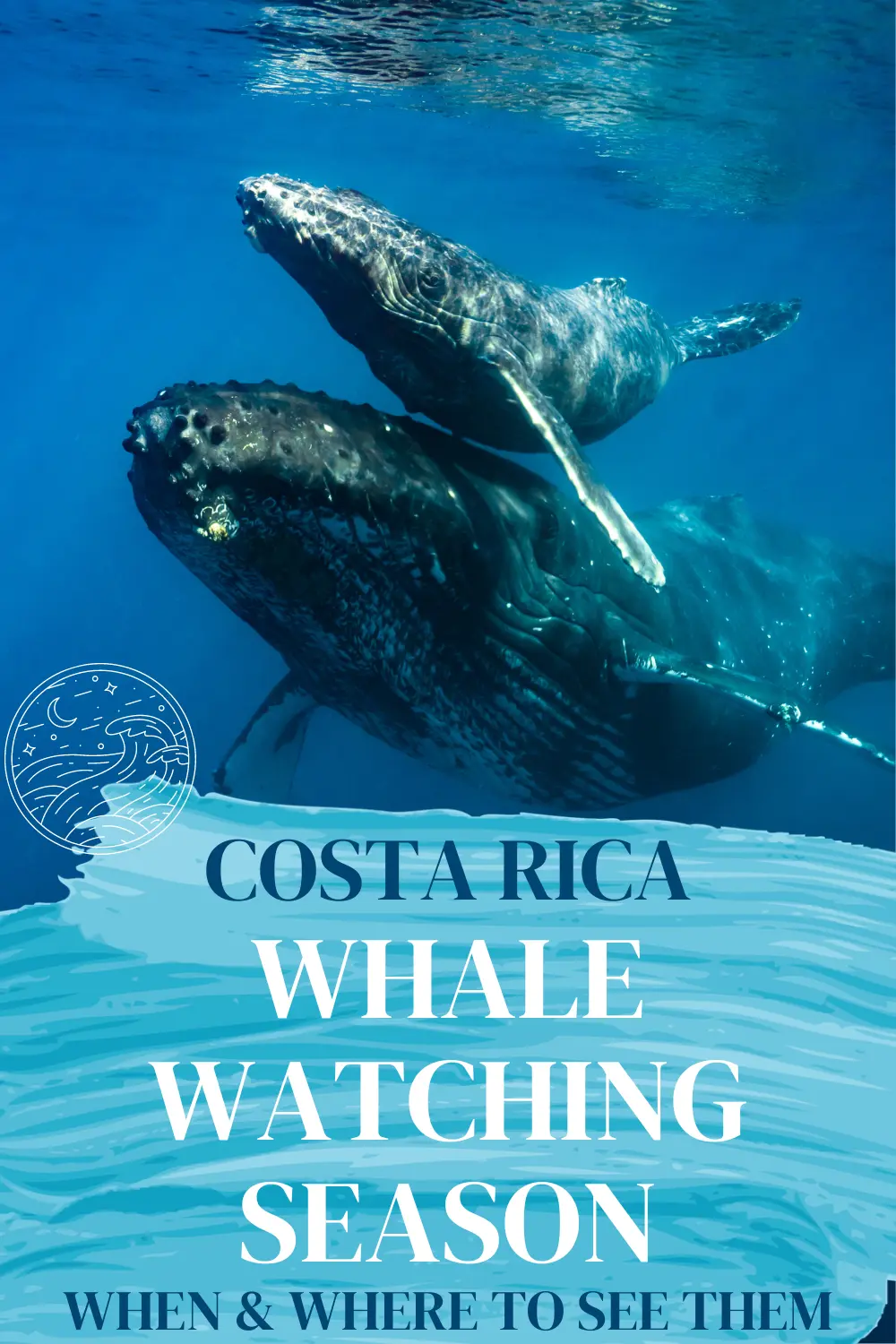What is Ocean Acidification?
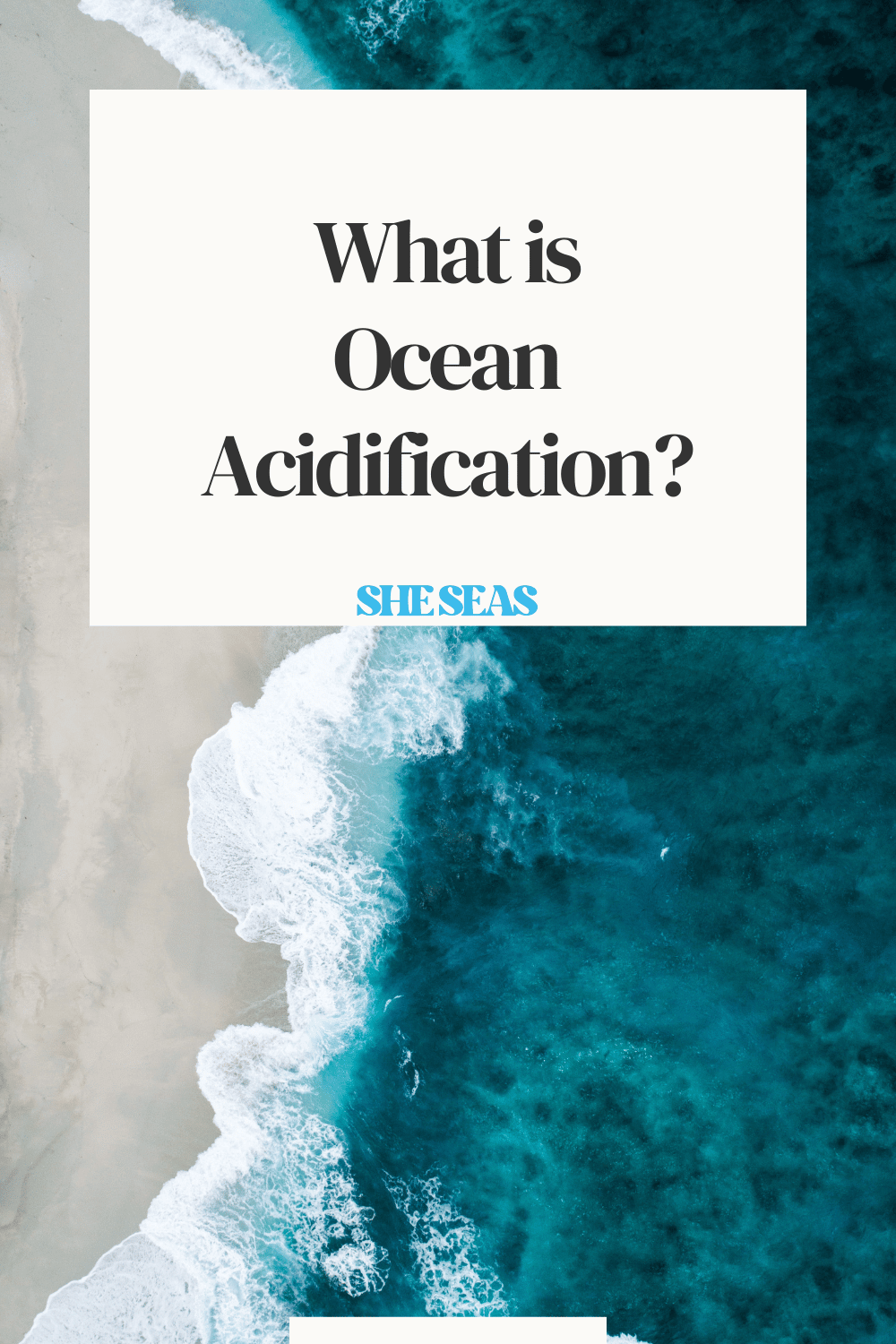
Introduction
Often considered the “evil twin” of climate change, take a closer look at what ocean acidification truly entails, its causes, and the far-reaching consequences it holds for marine ecosystems and humanity.
Ocean acidification is a pressing environmental concern stemming from the absorption of carbon dioxide (CO2) emitted into the atmosphere through human activities. As CO2 dissolves into the world’s oceans, it significantly alters their chemical composition, leading to the phenomenon we know as ocean acidification. This process poses a significant threat to marine life and, in turn, affects our own well-being.
What is Ocean Acidification?
In simple terms, ocean acidification refers to the decrease in the pH of seawater as it absorbs CO2. pH is a measure of acidity or alkalinity, with lower values indicating higher acidity. Over the past two centuries, since the Industrial Revolution, the oceans have absorbed approximately one-third of the CO2 emitted by human activities, leading to a significant rise in acidity levels.
The primary cause of ocean acidification is the excess carbon dioxide in the atmosphere, which dissolves in seawater and reacts with water molecules to form carbonic acid. This acidification process alters the delicate balance of carbonate ions in the ocean, making it harder for marine organisms such as corals, shellfish, and plankton to build and maintain their protective shells and skeletons.
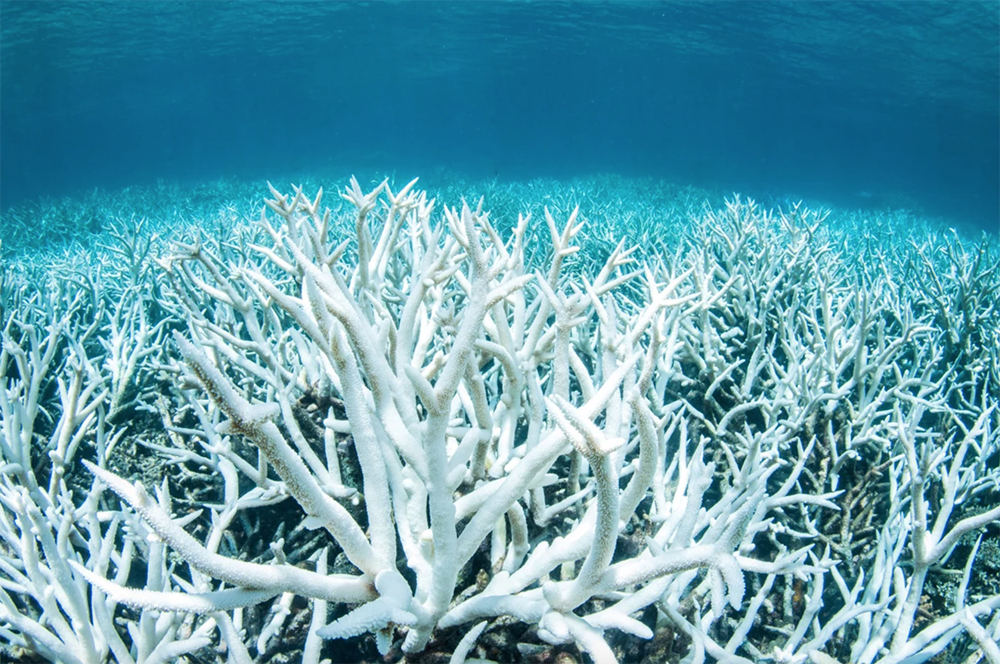
The ocean has protected us from the worst of increased carbon dioxide in the air by absorbing heat and carbon emissions, but this means a warmer ocean that natural evolution is not equipped to keep up with.
What We Know Now
A few decades ago when climate change was just beginning to enter the wider societal lexicon, scientists believed the ocean was a safe haven. That all this excess CO2 could be safely absorbed by the ocean and that would leave less in the air to warm the planet. However, as time went by they realized that this extreme change in the atmosphere is actually changing the ocean’s chemistry. And that’s a big problem.
According to the Smithsonian: “Even though the ocean is immense, enough carbon dioxide can have a major impact. In the past 200 years alone, ocean water has become 30 percent more acidic—faster than any known change in ocean chemistry in the last 50 million years.”
And this drastic change has had terrible consequences for sea life.
The marine ecosystem is very fragile, and every change has major consequences. Some organisms will survive and even thrive under the more acidic conditions while others will struggle to adapt, and may even go extinct.
Coral Bleaching
You may have heard of the term “coral bleaching” in the past few years, particularly, coral bleaching events in places like the Great Barrier Reef. In 2022, this magnificent reef suffered its sixth mass bleaching event with 91% of reefs surveyed affected.
Coral bleaching refers to the phenomenon where coral reefs lose their vibrant colors and turn pale or white. It occurs when corals expel the symbiotic algae (zooxanthellae) living in their tissues, which provide them with food and give them their color. The expulsion of these algae is often a stress response to changes in environmental conditions. This stress response can be caused by changes in ocean temperature, runoff and pollution, and overexposure to sunlight.
When a coral bleaches, it is not dead. Corals can survive a bleaching event, but they are under more stress and are subject to mortality.
The effects of coral bleaching are significant and far-reaching. Without their symbiotic algae, corals lose their primary source of nutrition and become more susceptible to disease and death. Coral bleaching events have led to mass die-offs of coral reefs worldwide, causing a decline in biodiversity and ecosystem services provided by these vital marine ecosystems.
The loss of coral reefs has profound implications for marine life, as coral reefs serve as critical habitats for numerous species, including fish, crustaceans, and invertebrates. The indirect effects of coral bleaching can cascade through the food chain, impacting the livelihoods of coastal communities that rely on fishing and tourism, as well as economies that depend on healthy coral reefs.
Effects on Sea Creatures
Ocean acidification is best known for its osteoporosis-like effects on shellfish including oysters, clams, lobsters, shrimp, which makes building and maintaining shells difficult for these creatures. Acidification also affects other species vital to the marine ecosystem, including reef-building corals and pteropods.
Coral provides food and shelter from larger fish. The larger fish eat the smaller fish. Blue whales, the largest animals in the world, eat krill. A 2010 study found increased CO2 in the water can kill off krill embryos before they have the chance to develop. From the tiniest creatures to giant whales, this eventually affects all life in the ocean.
Effects on Humanity
Presently, over a billion people across the globe heavily depend on ocean-derived food as their main protein source. Approximately 20 percent of the world’s population relies on fish to meet at least one-fifth of their animal protein requirements.
The livelihoods of numerous individuals and the economies of both the United States and other countries are closely tied to the thriving marine fisheries and shellfish industries. The decline in fish and shellfish harvests poses a significant threat, particularly to the most vulnerable populations in the least developed nations, where alternative agricultural options are limited.
A 2015 study showed acidification-hotspots across the US posed a threat to the $1 billion U.S. shellfish industry. Globally, areas like Norway, Scotland, and the Caribbean are already being affected.
Additionally, in laboratory studies, many harmful algal species produce more toxins and bloom faster in acidified waters. A similar response in the wild could harm people eating contaminated shellfish and sicken fish and marine mammals.
Looking even further out, the loss of coral reefs means the loss of storm protection vital to many coastal communities, as well as tourism.

What Can We Do?
Addressing ocean acidification is a complex challenge that requires global efforts and cooperation. While individuals can make a difference in their own ways, addressing this issue effectively will require actions at the national and international levels.
Remember that individual actions, no matter how small they may seem, can contribute to the collective effort to combat ocean acidification. Here are some strategies and approaches to combat ocean acidification at home.
Reduce Greenhouse Gas Emissions
To combat ocean acidification, we must work towards reducing greenhouse gas emissions from various sources, including burning fossil fuels, deforestation, and industrial processes. While these are big tasks, we can take small steps in our own lives in the right direction.
- Use energy efficiently: Opt for energy-efficient appliances, LED light bulbs, and programmable thermostats. Turn off lights and electronics when not in use, and consider using renewable energy sources like solar panels if possible.
- Practice waste reduction by minimizing (or eliminating!) single-use plastics and recycling paper, glass, metal, and plastic items. Composting organic waste can also help reduce methane emissions from landfills.
- Choose sustainable transportation: Walk, bike, carpool, or use public transportation whenever possible. If feasible, consider switching to electric or hybrid vehicles to reduce emissions from fossil fuels.
- Eat a plant-based diet: Limiting meat consumption, especially beef and lamb, can significantly reduce greenhouse gas emissions from livestock farming.
- Choose sustainable products: Opt for products with minimal packaging, eco-friendly certifications, and those made from recycled or sustainable materials.
- Support local and sustainable businesses: Buy locally produced goods to reduce emissions associated with transportation and support businesses that prioritize sustainability.
- Support renewable energy: If you have the option, choose a green energy provider that supplies electricity from renewable sources like wind, solar, or hydro power.
You can calculate your home’s carbon footprint and get more ideas here.
Sustainable Land Management at Home
Land-based activities can contribute to ocean acidification through runoff carrying nutrients and chemicals into coastal waters. You can support sustainable land management around your home by:
- Reduce water usage: conserve water by using efficient irrigation systems, fixing leaks, and minimizing water waste.
- Practice responsible gardening: Use native plants and implement water-wise landscaping techniques in your garden or yard. Native plants are adapted to the local environment, require less water, and support local wildlife.
- Compost organic waste: Instead of sending organic waste to landfills, compost kitchen scraps and yard waste. Composting enriches the soil with nutrients and reduces the need for chemical fertilizers.
- Support sustainable agriculture: Choose to buy products from local farmers and producers who follow sustainable agricultural practices. Look for organic and fair trade labels, as they often indicate environmentally friendly and socially responsible farming methods.
Stay Informed
Advocate for sustainable land policies: Be an informed citizen and advocate for policies that promote sustainable land management and conservation at the local, regional, and national levels.
Practice IRL
Get involved in local conservation groups and initiatives focused on protecting natural habitats, such as beach clean-ups, or hiking trail maintenance. When visiting natural areas, follow leave-no-trace principles to minimize your impact on the environment. Avoid littering, stay on designated trails, and respect wildlife and their habitats.
